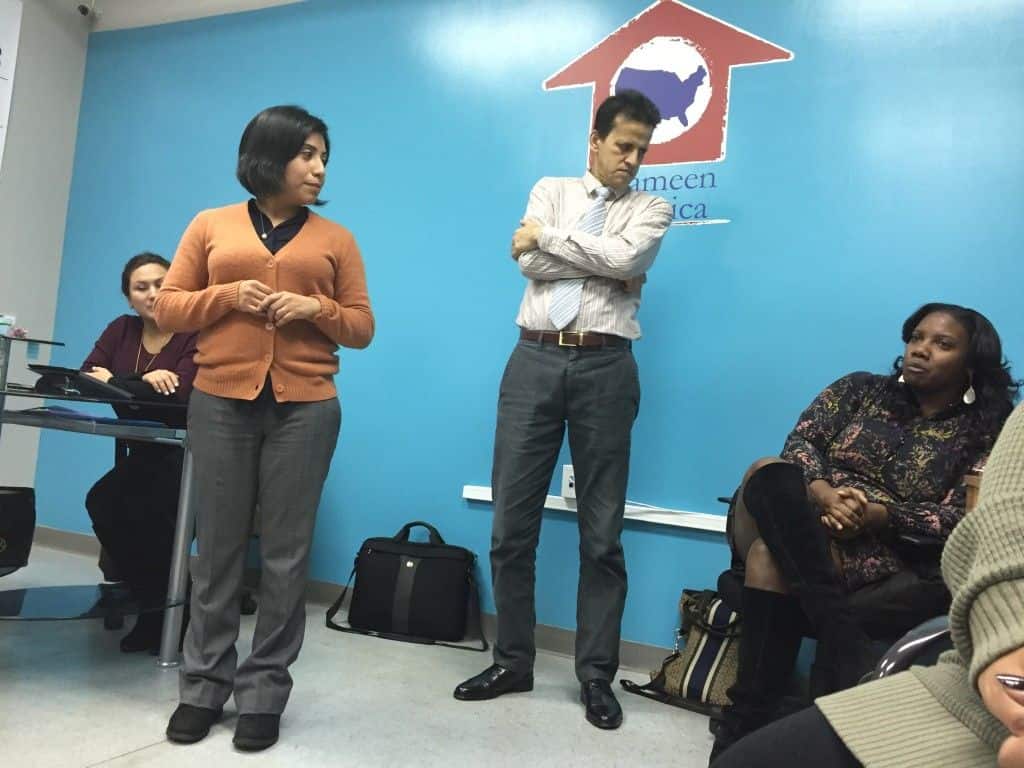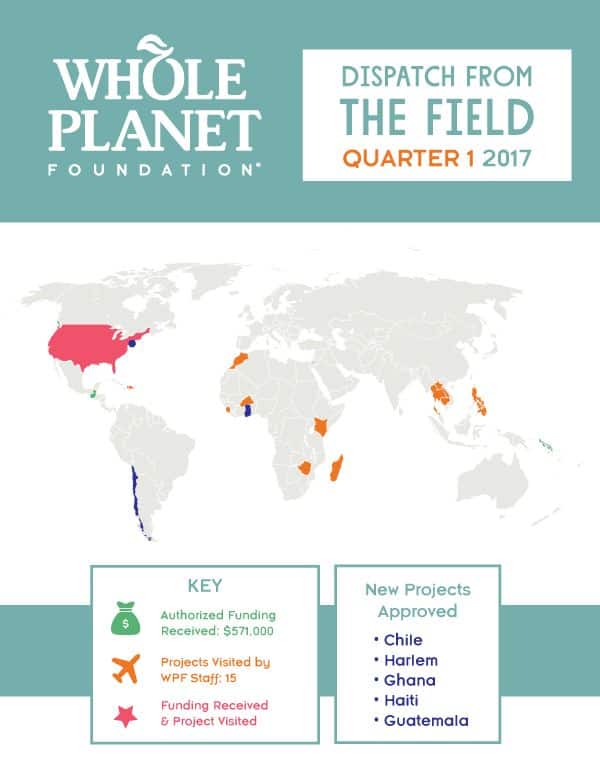By Daniel Zoltani, WPF Global Programs Director with contributions from our field team: Brian Doe, Zoe So, Claire Kelly, and Roxana Newton
During Quarter 1, we disbursed $571,000 to our microfinance partners and celebrated a milestone of 2 million microloans funded since inception. Our field team visited 15 countries.
Latin America/North America: Regional Overview
Grameen America (GAI) is WPF’s largest North American partner. Of the $5.84 million committed to the North America region, $5 million has been authorized for GAI. At the end of 2016, its portfolio exceeded $58.8 million and 59,800 active clients. WPF began supporting GAI in 2008 and since then, we have seen implementation of successful branches across the country. For the most part, GAI clients are (Hispanic) immigrants, and as demonstrated by the portfolio statistics, this model works very well. WPF wanted to see if GAI could implement their successful model with other demographics. Therefore, we were pleased to receive the 2017 Harlem proposal with a specific goal to reach African-American women. This project is in the early stages and our team is looking forward to learning about the challenges and opportunities as GAI rolls out their new outreach initiatives.
In February, we visited our microfinance partner Fonkoze in Haiti. The team visited the southwestern peninsula – the area hardest hit by Hurricane Matthew. Having visited the area three months after the hurricane, we were able to see operations beginning to normalize at the community level and branch level. Most of the clients we met were not able to resume activities until after they were able to recapitalize their existing loan. We see this as yet another good example of where Whole Planet Foundation’s funding can have an invaluable impact and support long term reconstruction after natural disasters.
Video: Loosely translated, borrowers from Fonkoze’s Okoto branch in Haiti are singing ‘Women are like reeds. They can cut us down. They can uproot us. But when the rain comes back, we will bloom again’
During this quarter, Roxana Newton, WPF Program Manager for Latin America and North America, visited 3 existing partners: Fonkoze in Haiti, Adopem in the Dominican Republic, and Solidarity Microfinance in Iowa. We also visited Grameen America in Newark, New Jersey. New project proposals were approved for Fondo Esperanaza in Chile, Fonkoze in Haiti, GAI in Harlem and Friendship Bridge in Guatemala.
Asia/Pacific: The Role of Regulation in Lowering Interest Rates
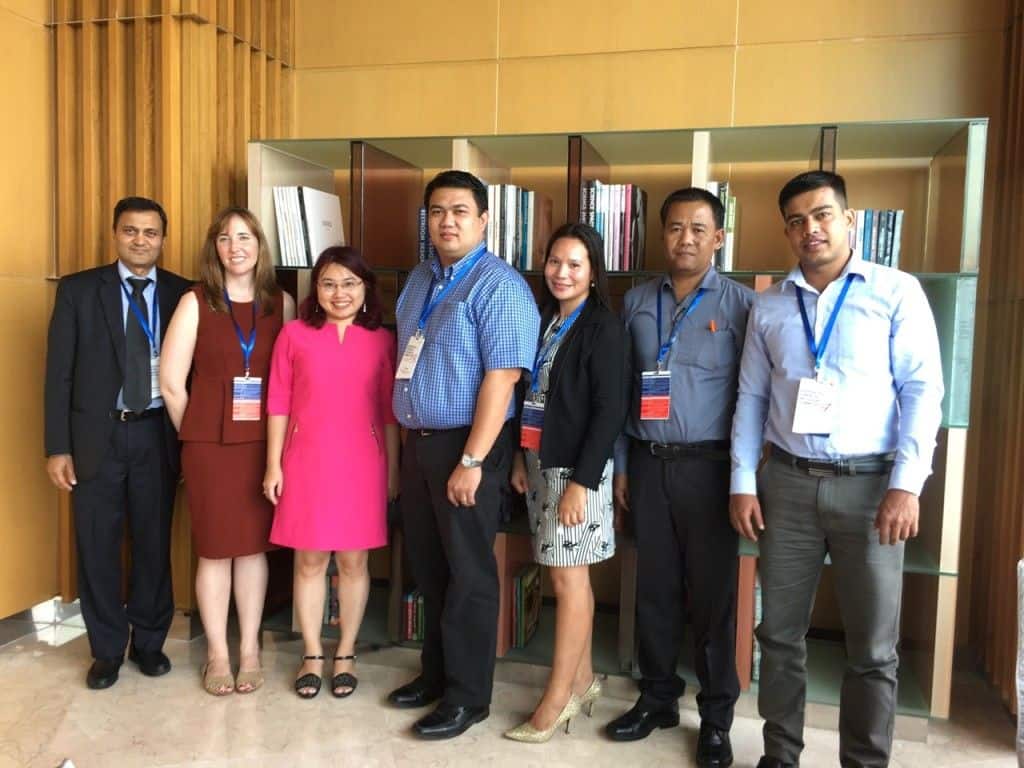
WPF’s Claire Kelly (second from left) with partners at the Asia/Pacific Financial Inclusion Forum. Representatives from Nirdhan (Nepal), TYM (Hanoi), NWTF (Philippines) and Berendina (Sri Lanka) came together to exchange best practices and challenges at their respective institutions.
Typically, WPF looks to see if our microfinance partners lower their interest rates as operational self-sufficiency increases. Through greater efficiencies and scale benefits can be passed on to all stakeholders of the MFI, including the client, through cost reduction on the loan through lowered interest rates. However, sometimes there are government regulations in the mix. In Quarter 1, we saw lowered interest rates from two partners in the Asia/Pacific region: WFDF in Laos, and Chamrouen in Cambodia. These cases are interesting because they were both influenced by regulation but rolled out in very different ways.
In Laos, WFDF management had expressed their intention to translate profitability into lower interest rates since the WPF partnership began. However, they wanted to wait until pending regulation from the Bank of Lao was finalized. At the end of 2016, the Bank of Lao finally published its regulation, mandating all MFIs use the declining method of interest rate calculation for loans over 5 million LAK (≈$600). Once WFDF understood the regulation, they moved forward with a decision to switch to the declining calculation for not just the loans over 5 million LAK, but for all loans. The shift from flat to declining interest calculation nearly cut the APR in half for WFDF’s borrowers. Significantly, WFDF took the opportunity to reinforce their social mission by extending the cut to the smallest (and most expensive to serve) clients, those with the loan sizes less than $600.
The story in neighboring Cambodia was very different. Cambodia’s microfinance sector is so saturated and competitive that there have been concerns around over-indebtedness and a possible microfinance crisis similar to what we saw in India in 2010. Imposing an interest rate cap was specifically not recommended by the state bank as a potential solution. Quite unexpectedly, the Prime Minister imposed just that. This was largely seen to be politically motivated as elections are coming up (as it was in 2010 in India). The immediate effect caused MFIs in Cambodia to struggle with sustainability, outreach, and product development. For example, Chamroeun had already been facing the challenges of the competitive market when very suddenly they needed to create a new strategy to maintain operations at these cheaper rates.
While these two examples of regulation have lowered interest rates, which should be a positive outcome for clients, there are a number of unintended consequences. In the case of Laos, WFDF clients might have accessed a lower interest rate sooner if not for the delayed government regulation. The full effects in Cambodia remain to be seen, but instead of benefiting from cheaper loans, it is quite likely that bottom-of-the-pyramid clients will find it more difficult to get a loan, as providers can’t afford to service small loans under the interest rate cap.
Over Q1, Claire Kelly, WPF Program Manager for Asia/Pacific Region visited 4 existing partners: WFDF in Laos, Chamroeun in Cambodia, SED in Thailand and NWTF in the Philippines. No new project proposals were submitted in Q1.
Africa/Middle East: Recalibrating toward traditional microfinance strategies
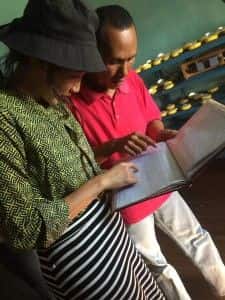
WPF’s Zoe So visits Jiro-Ve, our partner in Madagascar.
This quarter, our team renewed focus on finding new partners who embody a traditional microfinance strategy in the region after past focus on re-financing existing microfinance partners and researching new partners in the innovative agriculture and social business sectors.
In Q1, Brian and Zoe on our Africa/Middle East team focused on new partner research in eligible countries where our partnerships have ended (starting with Ghana and Morocco) and reviewing research of traditional microcredit in countries we have yet to reach but didn’t find partners in the past, like Zimbabwe and Mozambique. We will continue this in Quarter 2 with Malawi, Rwanda, and Uganda where our initial partnerships have also ended.
Over Q1, Brian and Zoe visited 7 existing partners: ID Ghana, KIEDF in Israel, ASALA in the West Bank, EdM in Burkina Faso, BRAC Sierra Leone, One Acre Fund Kenya, Jiro-Ve in Madagascar (read more about Zoe’s visit here) as well as Paris meetings with EdM HQ and COOPMED, and potential new partners in Zimbabwe and Morocco. One new project proposal for ID Ghana was submitted and approved in Quarter 1.
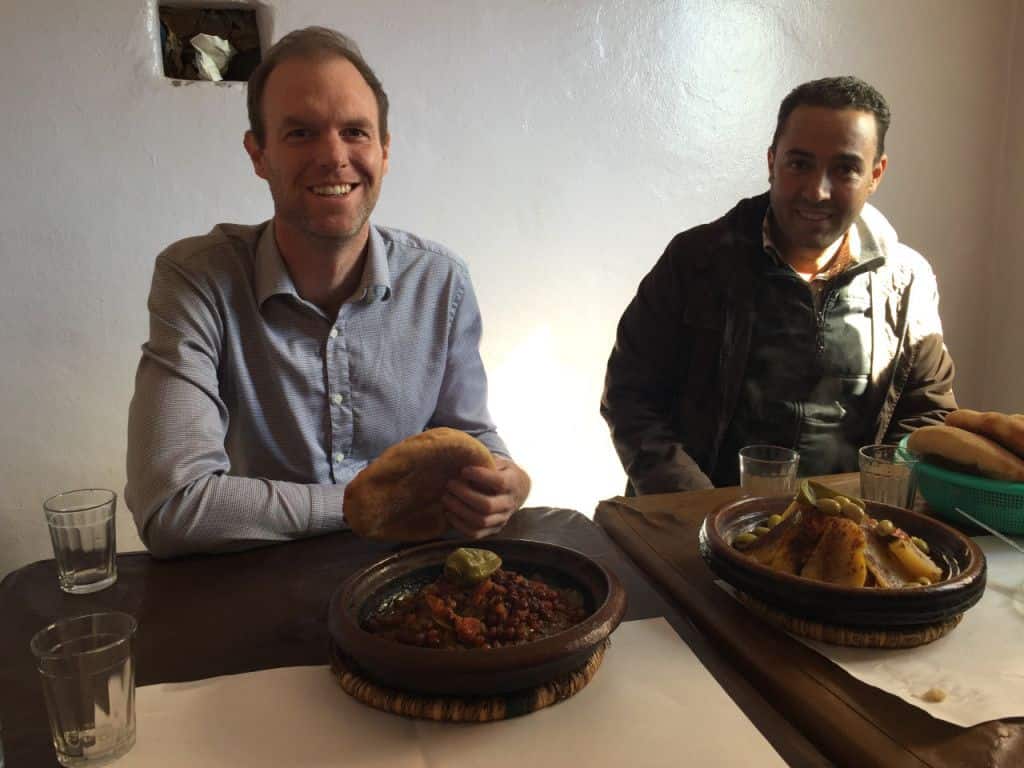
WPF’s Brian Doe with the INMAA team in Morocco enjoying tagines near the Atlas mountains where WPF has supported microcredit since 2010.
If you are a supporter of Whole Planet Foundation, thank you. Your support is invaluable to our promotion of entrepreneurship and attempt to reach the world’s poorest people with access to financial services. If you are only just joining us, we invite you to read more about our impact since inception.
Until next quarter,
Daniel Zoltani
Global Programs Director
Whole Planet Foundation

